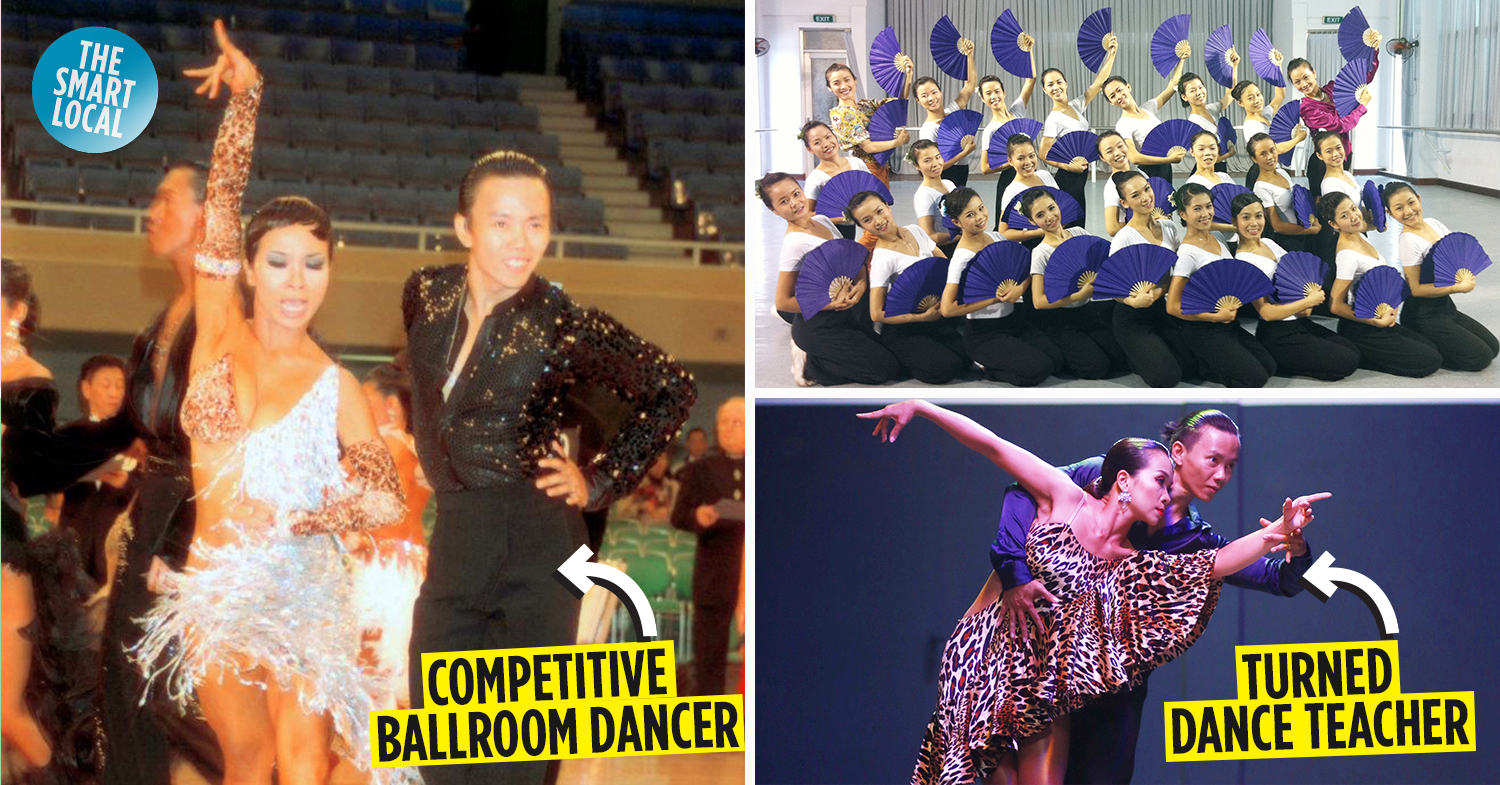From a professional ballroom dancer to a dance teacher
It’s not easy to let go of something you love, especially when you sweat blood and have high hopes for it. However, life doesn’t always go as planned and efforts don’t always guarantee you the outcome that you seek.
Mai Hạnh, a former professional dancer like them who achieved resounding success in international contests, decided to bid the spotlight and future trophies adieu. And her story will speak to those who are thinking of making changes in your careers for the sake of your mental well-being.
Dance begins with a dancer’s feelings. And for Mai Hạnh, it was love at first sight.
From basketball and finance to professional dancing
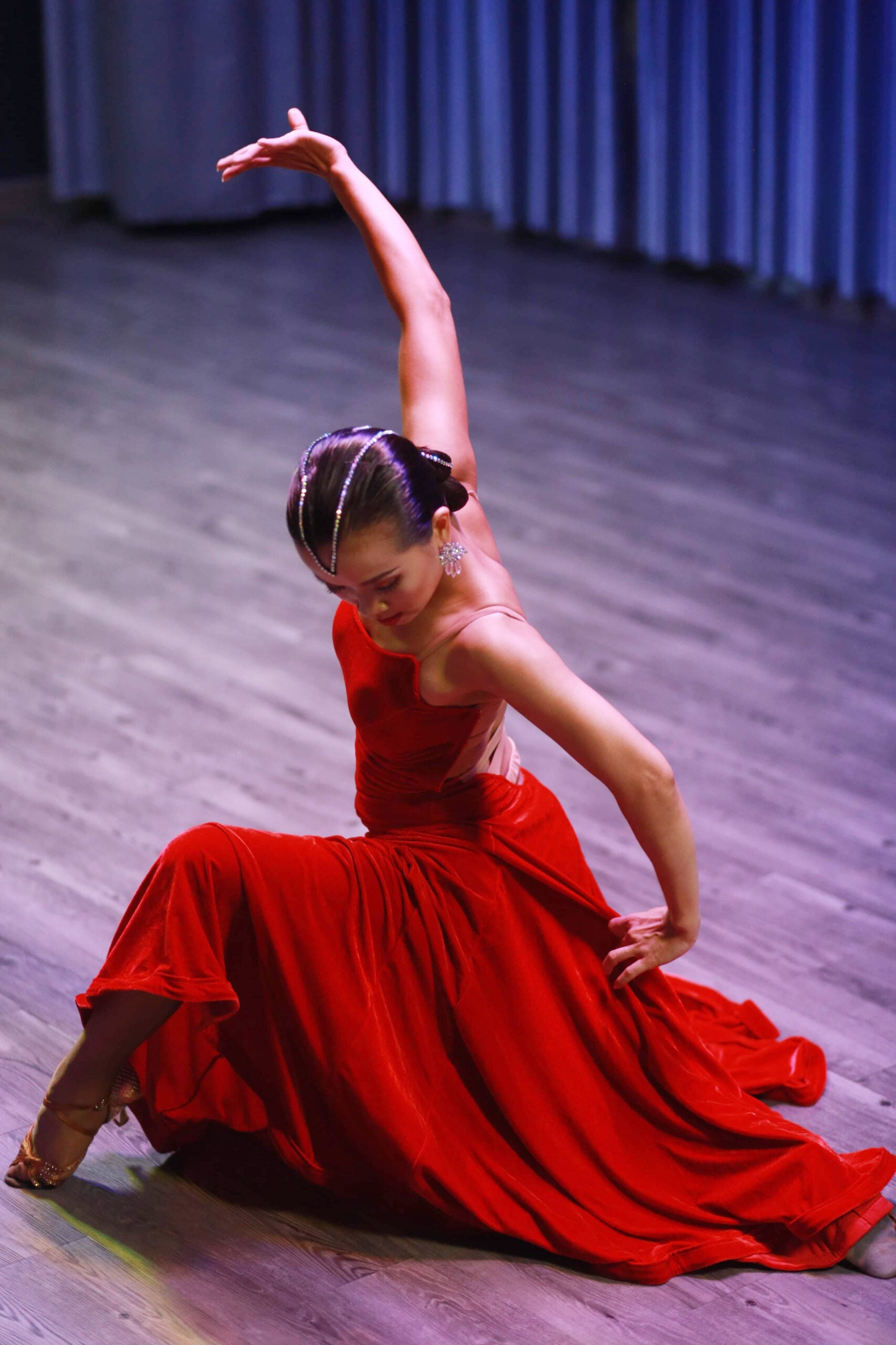
Image courtesy of Mai Hạnh
“I was playing for my high school basketball team when my teammate brought me to a ballroom dance club,” recalls Mai Hạnh, a Hanoi native who was first introduced to the world of international dance at Cầu Giấy Community House. It was an airy venue with many mirrors where a Vietnamese teacher was counting, “Slow, quick, quick!”
In 2001, ballroom dancing remained an alien sport to many locals, but the 18-year-old student was quickly fascinated by its sophisticated yet athletic nature from her first rumba lesson onwards.
“My first impression was that, in order to make one dance move look delicate and sexy on the outside,” she says, “you have to do it with enough power on the inside.”
As she developed her dance skills, and turned out to be wildly talented in the art form, she treated dancing like a hobby as she was focusing on studying finance at a local university. It was not until 4 years later when she started to perform and joined Vietnam’s first generation of dancers in the dancesport genre.
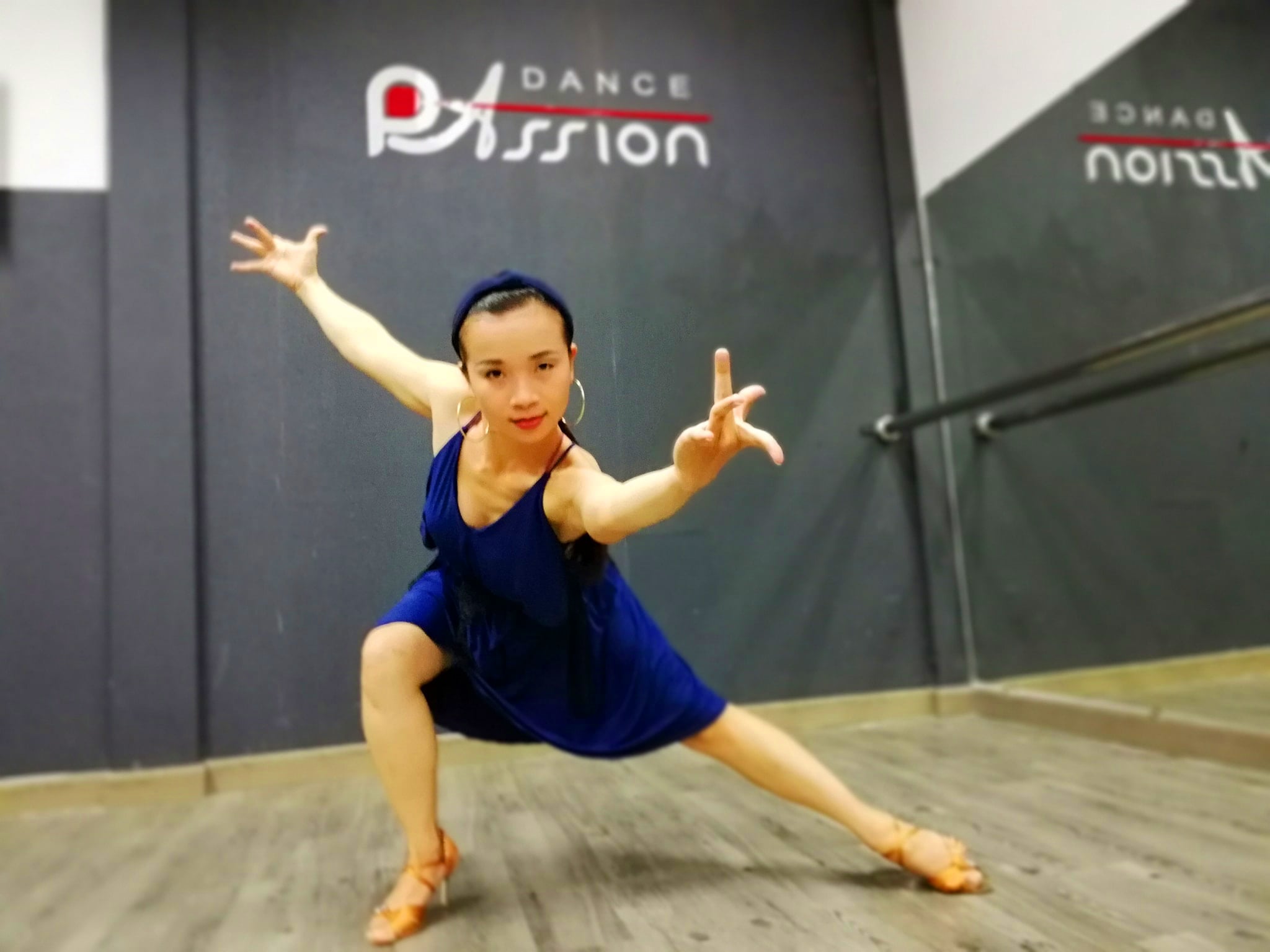
Image courtesy of Mai Hạnh
It’s obvious that Mai Hạnh is gifted. Coupled with her passion, it’s no surprise that she has accomplished a lot in her career. However, not every dancer is that lucky and not all who work hard become soloists or champions.
“To pursue a career in dance, you need both talents, also known as a God-given dancer body, and dedication,” she says.
Dedication is vital, without which there would be no performances at all. You know what you sign up for when you choose dance.
Serving sass in the spotlight feels amazing
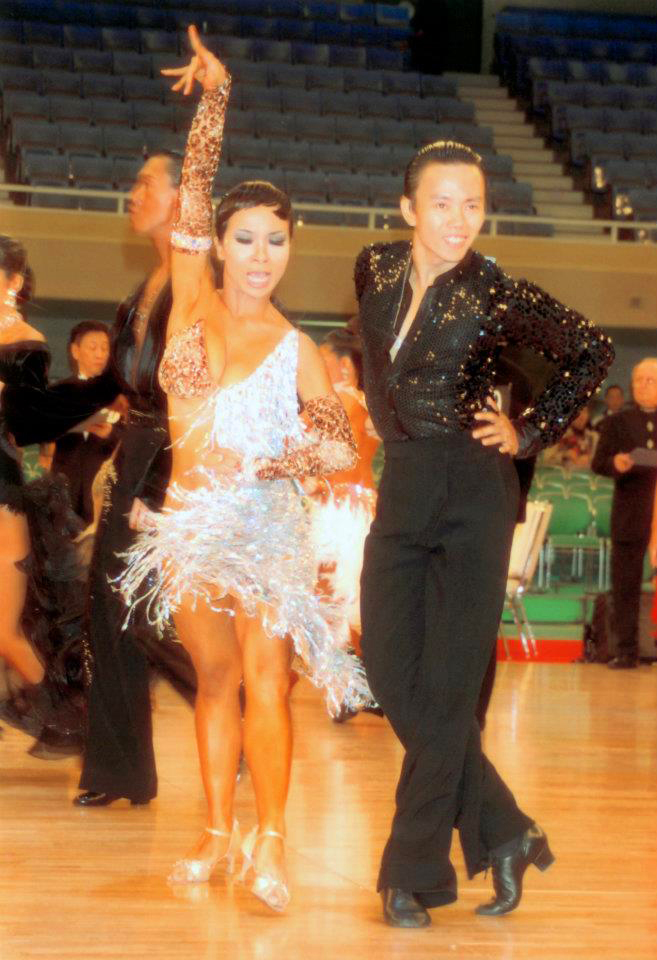
Mai Hạnh at a dance competition
Image courtesy of Mai Hạnh
The host announced, “Music, cue!”
Immediately, the audiences became silent, as dancers began to move their sculpted bodies. With eyes so intense they could break the ice and poker faces that oozed sensuality, the dancers let their hips and feet do the talking.
Their flashy sequin gowns set the dance floor alight, and their immaculate spins that matched the music perfectly gave the whole place an otherworldly beauty.
It was Mai Hạnh’s turn to flaunt her craft at the National Dancesport Championship that took place in 2005.
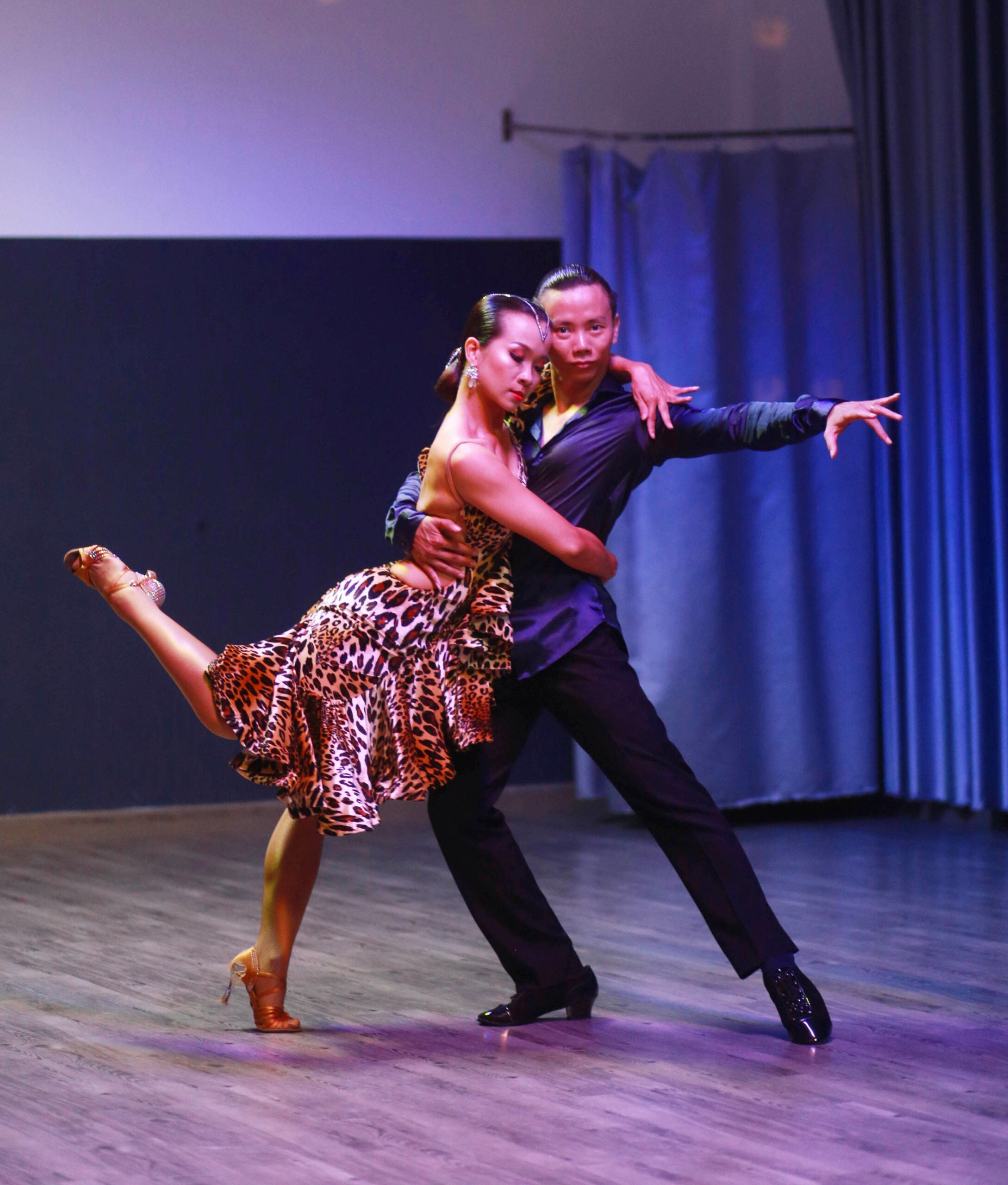
Image courtesy of Mai Hạnh
“When I flaunted a cool technique and served sass, the crowds cheered my participation number,” Mai Hạnh recalls the rare moment when she felt totally invincible with excitement and nostalgia in her voice. “The spotlight was glaring on my face, sweat prickled my skin, yet everything in me came alive.”
Moments like that, though lasting for less than 3 minutes, are what every dancer wishes to immortalize in their memories.
How can you forget a moment like that, when you spend at least 30 hours per week and a great fortune preparing for it?
Dancers don’t breeze through their careers like they do on the dance floor
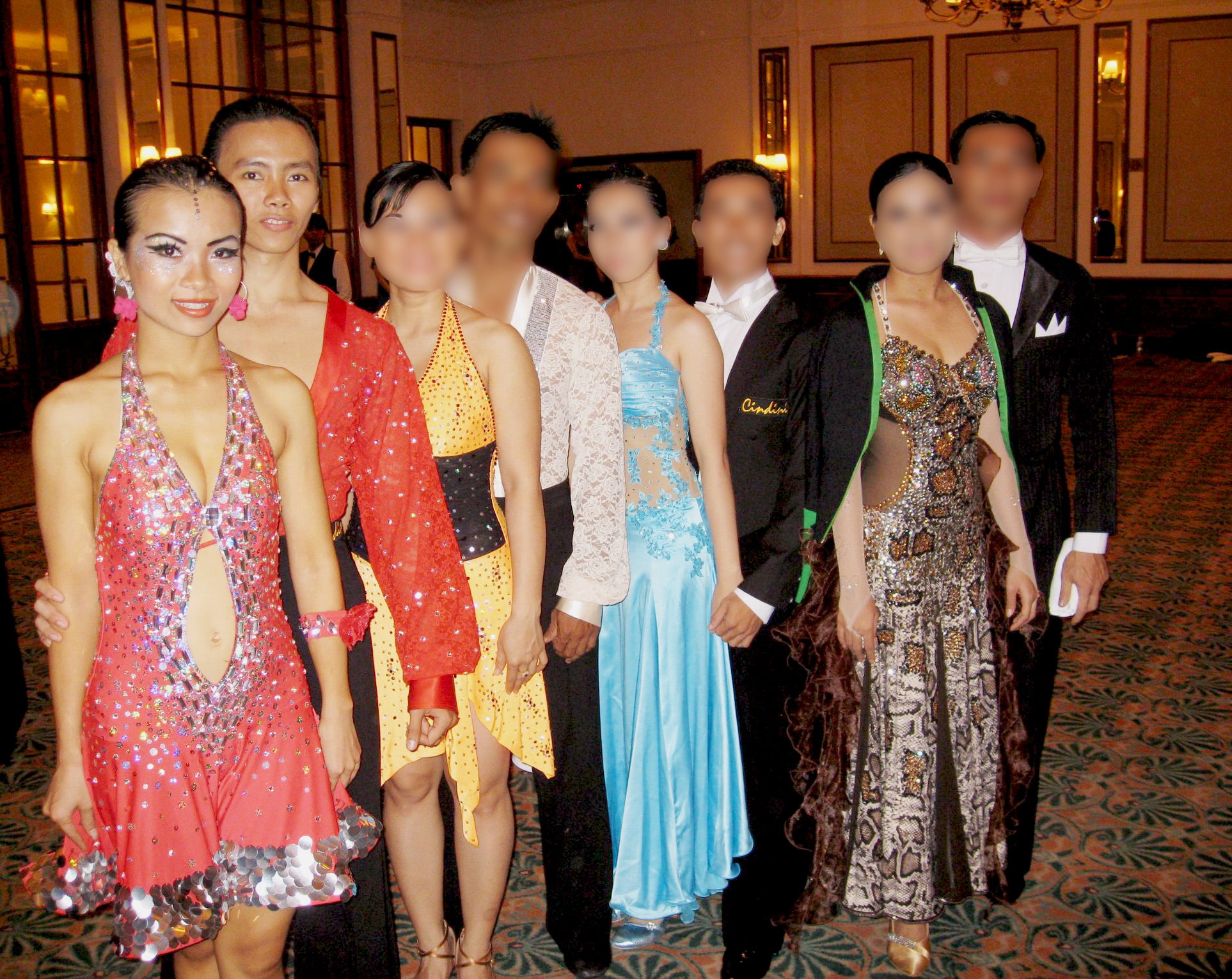
Dance couples at a ballroom dancing competition
Image courtesy of Mai Hạnh
Ballroom dance, or dancesport – a modern-day term for competitive dancing, is considered an aristocratic sport for good reason.
For one thing, dancewear for competition costs at least USD500, and it’s the number of the rhinestones glued on the costume that determines its value. The more rhinestones, the shinier your costume becomes, and the more attention you’ll get from the judges.
Many dancers even wear dazzling tiaras and crystal hair clips for this reason. If you watch Shall We Dance, you’ll find that dancer Link Peterson, a character played by Stanley Tucci, even puts on fake teeth and a wig just to stand out from the crowd.
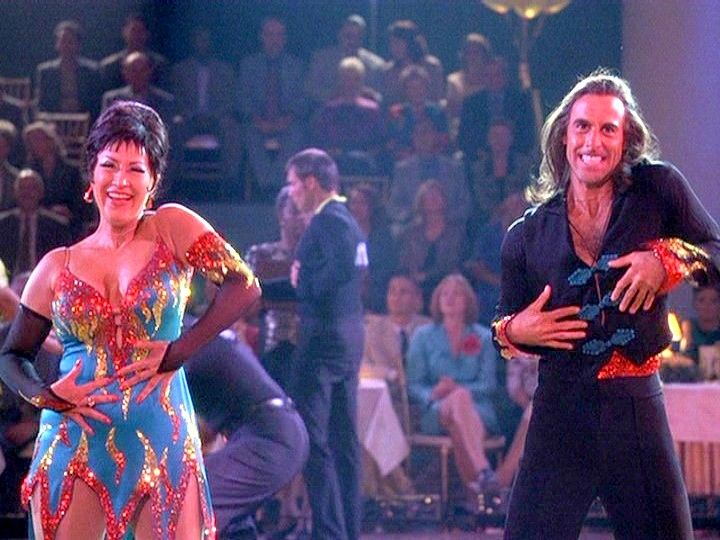
A scene from Shall We Dance where a couple compete in a cha-cha-cha routine
Image credit: Shall We Dance?/Miramax Films
A glamorous, quality pair of dancing shoes to match the costume costs a minimum of USD80. You must also factor in the costs of obligatory accessories such as a professional makeup kit, fishnet tights, tan gel, and heel protectors.
Dancewear alone can’t guarantee all eyes on your hips and a trophy. You’ll also need unique choreography, which can’t happen without a private instructor.
“You’re looking at a range of VND1,500,000-VND2,500,000 (~USD65.92-USD109.87) for only 45 minutes of private tutoring,” she reveals.
If you want to win a tournament, you’ll need more than 45 minutes of training per week and there’s no guessing the total costs. Couples eyeing national championships train about 5 hours every day for at least 4 weeks prior to the big day.
Some dance couples can’t help but get into heated arguments during practice, and some even slap each other. However, they all smile like lovebirds on stage with all their costumes and makeup on.
But in case you wonder if the prizes are worth their financial, physical, and emotional investments, the answer is a big no.
The monetary value of prizes in even the most prestigious dance competitions in the country, though we can’t reveal them publicly, are nothing compared to what dance couples pour into a 2-minute-long performance. If a dancer suffers an injury, which is always probable, they have to pay for their treatment and recovery expenses.
“If you, however, use satisfaction as the benchmark, it’s all worth it!” Mai Hạnh explains.
Even so, not all passion pays off and not every professional dancer achieves their dreams.
Quitting the spotlight to dance free and proud
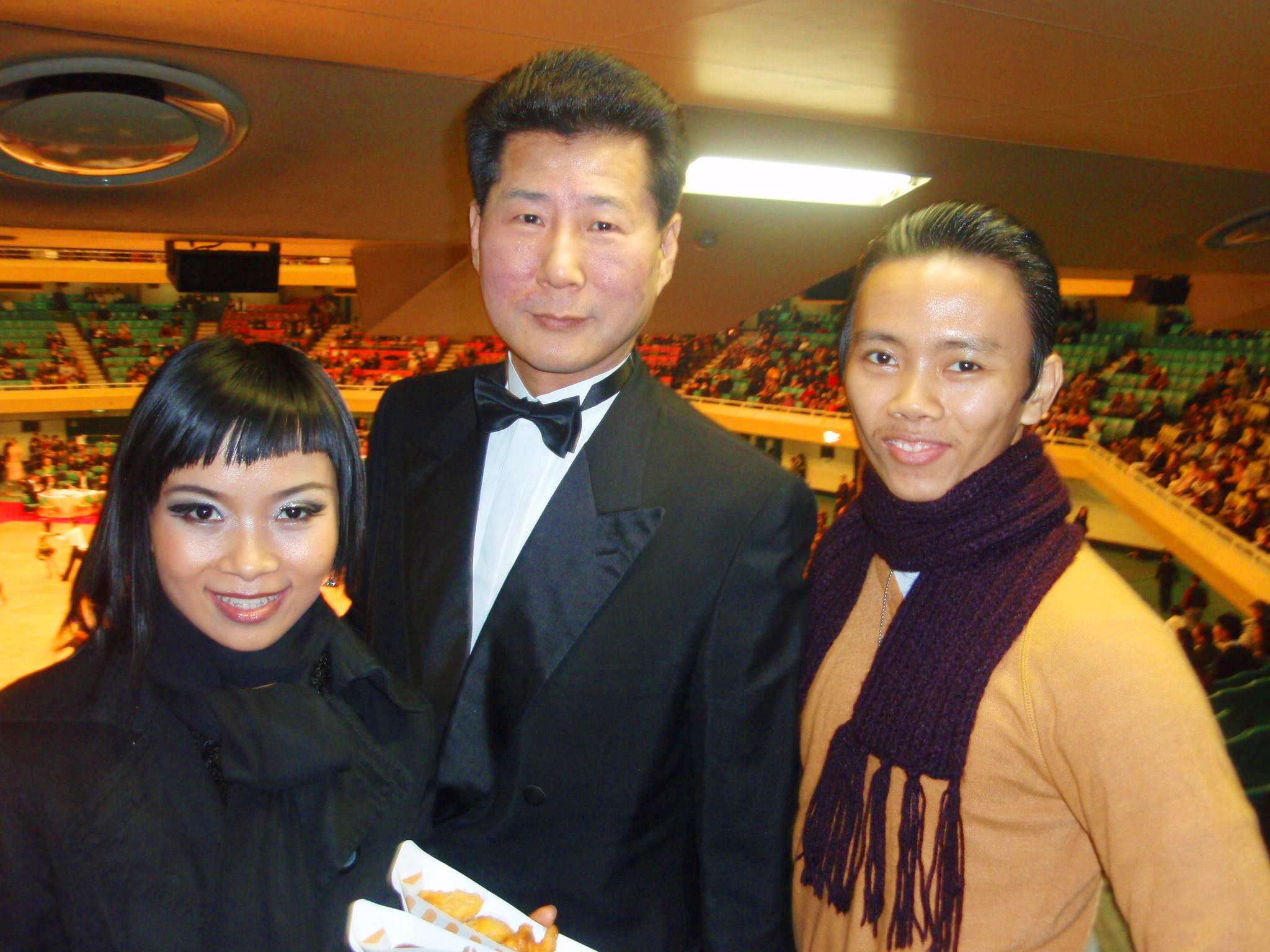
Competing in Japan
Image courtesy of Mai Hạnh
After liberating their souls on the dance floor, all dancers have to face the judges’ verdict in the end and decide what to do next.
Some accept defeat and wait for the next championship to stand in the spotlight again. Some decide to leave for good.
Through competitions, a dancer discovers a great deal about themself and how far they can go in this profession.
Dance is a visual art, and its execution must be flawless in accordance with international standards for competition purposes. However, it doesn’t change the fact that Vietnam is still a developing country with a dance scene in its early stages.

Mai Hạnh (white shirt) as a judge at a dance championship
Image courtesy of Mai Hạnh
Every industry has its dark side, and dancing is no exception. Psychological tactics, conditional claps and cheers, and even price tags on medals are not uncommon to those privy to the dancesport industry. No matter how superb you are, you won’t go far here if you can’t fit in.
Gradually, the spotlight began to feel less like an exploration of the glorious beauty of dancesport to Mai Hạnh, and more like a test of one’s desire to climb up the ladder of prestige.
It was not fun anymore.
On average, a dancer’s performance career tends to end around the age of 40. And Mai Hạnh didn’t want to spend her heyday in constant second-guessing and disappointment.
After nearly a decade of making a name for herself in this fancy yet injury-plagued arena, she left the spotlight to find peace and joy in dance again.
“I never stopped dancing. I only stopped dancing competitively,” she explained when I asked her if she ever regretted leaving the field.
Without the pressure of winning, she began to enjoy dancing for the first time in a very long time.
She now runs a dance studio of her own
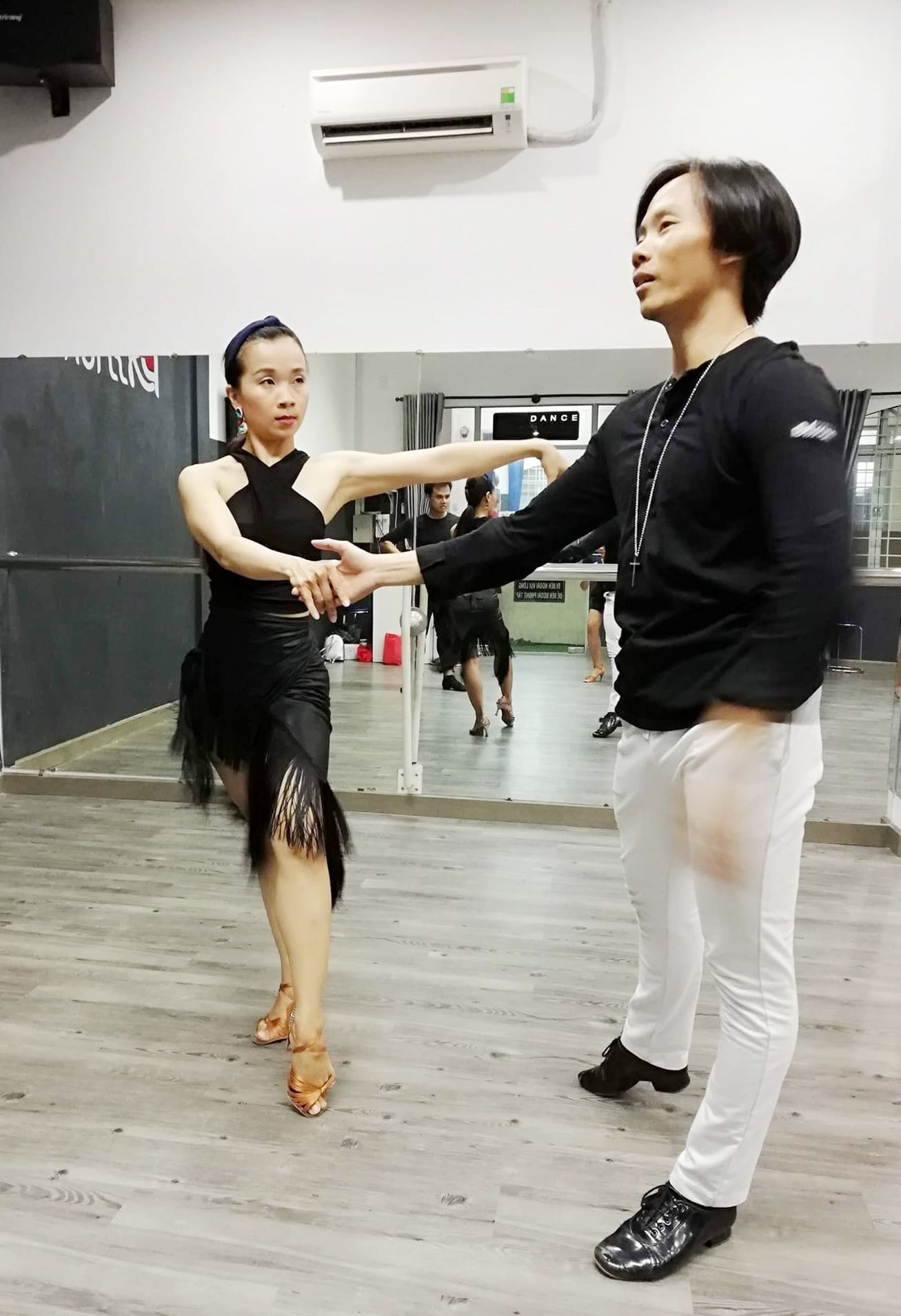
Image courtesy of Mai Hạnh
Mai Hạnh finally learned to strike a happy balance between her fiery passion for dance and desire for a stable profession by pursuing a career in teaching instead of performing.

Mai Hạnh (first row, second from left) at Vocational Ballet School of Ho Chi Minh City
Image courtesy of Mai Hạnh
10 years after her first dance lesson at a small club, Mai Hạnh pursued an education in Vocational Ballet School of Ho Chi Minh City, majoring in ballet and Vietnamese folk dance. After two years, she graduated cum laude and was also awarded with a certificate from the Imperial Society of Teachers of Dancing in England.
Today, she runs Dance Passion – her own dance studio in Saigon with her partner-turned-husband Nhân Trường. Before quitting the competitive arena, they were known as the talented dance couple Nhân Trường – Mai Hạnh. Now, they just see themselves as dance artists who teach, compose choreography when commissioned, and spread the joy of dance to local hopefuls.

Image courtesy of Mai Hạnh
During the pandemic, the couple switched to teaching online classes and experimenting with new dances. Today, every moment spent dancing is therapeutic to her, and working free and proud on the sidelines brings simple joy. Perhaps it’s the reason why she looks as if she’s in her 20s even though she’s 38.
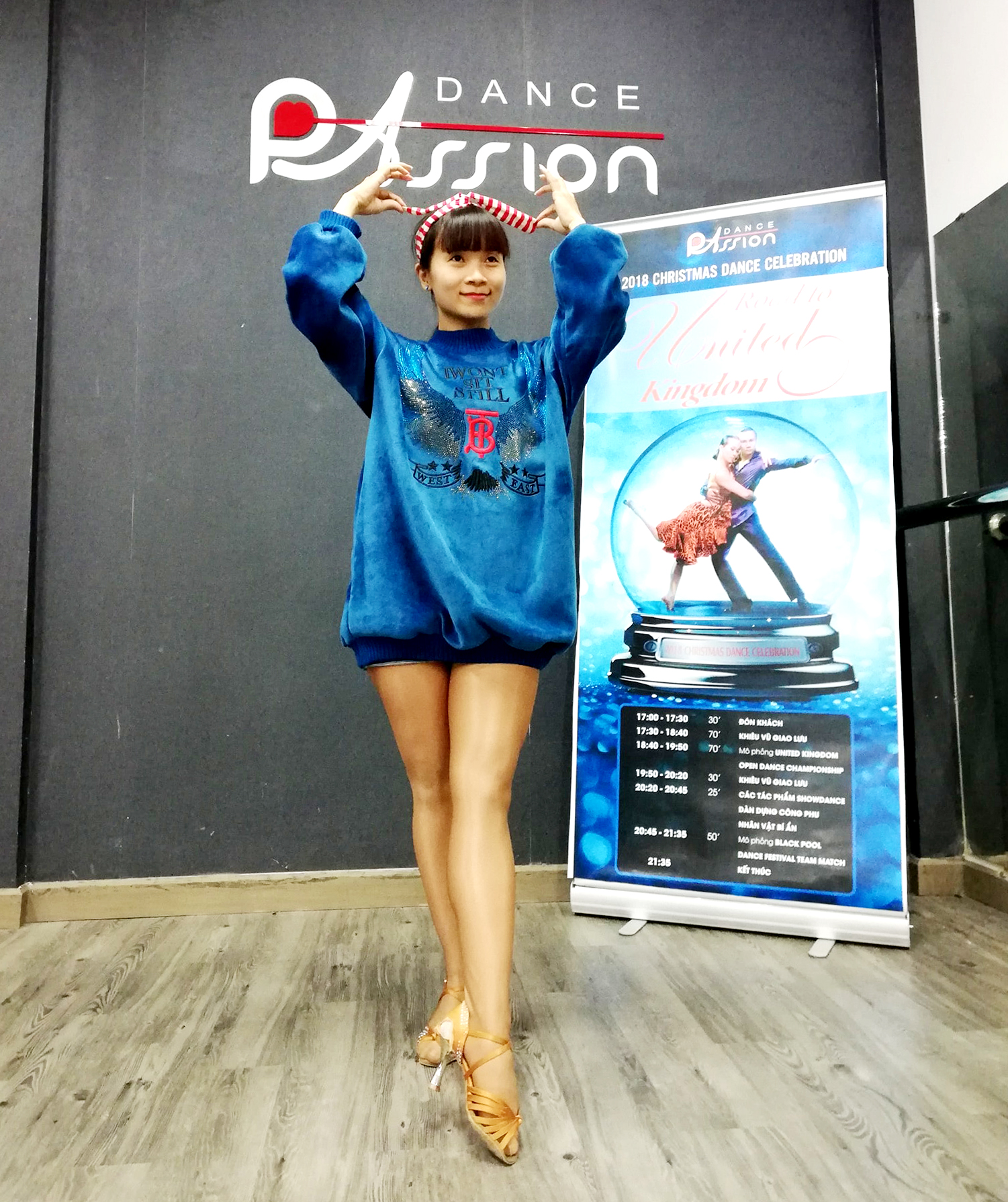
Image courtesy of Mai Hạnh
“I’m learning social latin dance now,” Mai Hạnh eagerly shares her daily routine as a simple dance lover. “It’s less conventional than ballroom dancing, but so fun.”
Chart your own path and adjust your expectations
As a famous proverb goes, “3 minutes of glory on stage, 10 years of hard work off the stage.” This can’t be truer for people making a living as athletes or artists.They train incredibly hard, many making immense physical and mental sacrifices. And yet, what they are getting in return is nothing compared to the amount of sweat and blood they are pouring out.
However, it doesn’t mean that there’s no future for those who want to pursue an artistically inclined career in Vietnam. Just like Mai Hạnh, if you want to always feel the joy in your area of talent, you’ll need to chart your own path. Don’t succumb to the circumstances thinking that the only way to arrive at your destination is to top the charts or stand on the stage.
What you need to do after discovering your passion is to map things all out and make informed decisions.
Since you’ll have to make lots of sacrifices in the arts anyway, do it in such a way that leaves you with no regrets.
Also check out:
- Choosing to stay: confessions of a Saigon real estate agent amid Covid-19
- Saigon doctor describes life inside Covid-19 ward
- Covid-19 updates: HCMC to ease Covid-19 curbs after 1st October
- Covid-19 doctor begged for a last look at husband who died of Covid-19
- Choosing to stay: confessions of a Saigon real estate agent amid Covid-19
- Vietnam’s road to normalcy starts with vaccine passports
- Covid-19 commentary: a gradual transition is the way out for Vietnam
Cover image adapted from: Mai Hạnh
Enjoying The Smart Local Vietnam? Follow us on Facebook, Telegram, Instagram, and LinkedIn for more stories like this. If you have a story to share, email us at pressvn@thesmartlocal.com.
